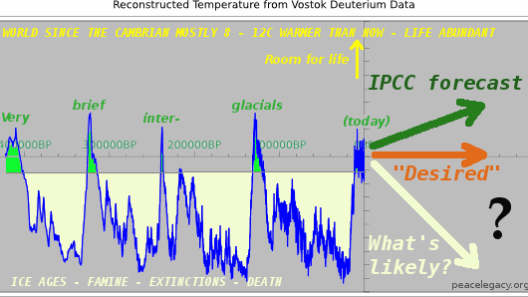In the intricate tapestry of environmental discourse, the Congress Conundrum emerges as a fascinating enigma: can the geopolitical machinery of Congress genuinely engineer a robust response to the exigencies of global warming? This question beckons not only a meticulous examination of legislative dynamics but also necessitates an exploration of the overarching political landscape. As the planet teeters on the brink of irrevocable change, the role of politics in mitigating climate catastrophe looms larger than ever.
At its core, global warming represents a profound paradigm shift, akin to a slow-moving glacier that threatens to reshape the very contours of human existence. The scientific consensus is voluminous and unequivocal. Rising temperatures are inexorably linked to anthropogenic activities, predominantly the combustion of fossil fuels and the ensuing greenhouse gas emissions. These processes have propelled us into an age of unprecedented climatic volatility. As Congress convenes to deliberate potential solutions, it finds itself navigating a labyrinth of interests, ideologies, and the ever-present specter of economic ramifications.
Ironically, Congress, the bastion of democracy and representation, has often been paralyzed by partisanship when confronting climate change. The metaphor of a ship adrift in turbulent waters aptly encapsulates the current legislative impasse. Here we find a crew divided over the destination: while some fervently champion the transition to renewable energy and sustainability, others remain ensconced in the status quo, swayed by entrenched fossil fuel interests. This dichotomy not only hinders the enactment of pertinent climate policy but also undermines public confidence in governmental efficacy.
Importantly, the legislative landscape is punctuated by significant proposals that seek to address the burgeoning climate crisis. A prominent example includes the Green New Deal, an ambitious framework aiming to decarbonize the economy while simultaneously addressing social inequities. This multifaceted approach intertwines economic revitalization with ecological stewardship, positioning climate action as a holistic imperative rather than a mere political tool. However, the reception of such initiatives has been mixed, with critics decrying them as economically impractical, further illustrating the complex interplay of ideology and policy.
Indeed, the significance of public sentiment cannot be overstated. The constituents’ role in shaping congressional agendas is akin to the undercurrents in a river, subtly yet powerfully guiding the flow of legislative priorities. Grassroots movements advocating for climate action have proliferated, mobilizing large swaths of the electorate and demanding accountability from their representatives. This burgeoning momentum has yielded palpable results, as evidenced by the increasing number of climate-conscious legislators who have ascended to power, advocating for policies that prioritize environmental sustainability.
Yet, the political quagmire remains formidable. Lobbying by fossil fuel industries continues to exert a disproportionate influence on congressional decision-making. The intertwining of economic interests with legislative power creates a scenario where short-term gains often eclipse long-term environmental imperatives. The metaphor of David and Goliath aptly captures the struggle of climate advocates against the formidable might of well-funded lobbyists who prioritize profit over planet.
Furthermore, the inherent complexity of climate science presents another layer of difficulty. Legislative bodies are tasked with distilling intricate scientific findings into actionable policy, a process that demands both clarity and urgency. The challenge is akin to translating a foreign language; without a concerted effort to bridge the knowledge gap, proposed legislation may falter or, worse yet, exacerbate the climate dilemma. Compounding this issue is the temporal disconnect between political cycles and the long-term nature of climate change. Politicians entrenched in reelection battles often lack the incentive to pursue policies that may not yield immediate results, thus stalling progress toward comprehensive climate legislation.
Despite these hurdles, there exist glimmers of hope that illuminate a pathway toward effective climate action. Collaboration across party lines is not merely an idealistic dream; it has been realized in various instances where bipartisan support has emerged for environmental initiatives, especially when framed within the context of national security or economic resilience. The recognition that climate change has ramifications that transcend political affiliations is emerging among a growing cadre of legislators willing to rise above partisanship.
Moreover, the integration of technology into climate solutions offers a refreshing perspective. Innovations in green technology, renewable energy, and sustainable practices present opportunities for economic growth that can no longer be ignored. By harnessing these advancements, Congress can pivot the narrative surrounding climate action from one of prohibition and sacrifice to one of opportunity and progress. In essence, the legislative discourse surrounding climate change can—and should—transform into a synergy between environmental preservation and economic revitalization.
Ultimately, the Congress Conundrum serves as a reminder of the intricate relationship between politics and environmental stewardship. While the challenges are daunting, the belief in human ingenuity and collective action persists. As constituents continue to advocate for audacious climate policies, the onus remains on Congress to transcend conventional political divides. The imperative for climate action resonates far deeper than partisan interests—it is a call to preserve the very foundations of life on Earth.
In conclusion, the question of whether politics can solve global warming is not merely about finding legislative solutions; it is about fostering a cultural paradigm shift that recognizes the environment as an integral component of humanity’s collective future. The time for decisive action is now, and the responsibility lies squarely in the hands of both lawmakers and their constituents. Only through mutual commitment and understanding can we navigate this complex conundrum and steer toward a sustainable future.






